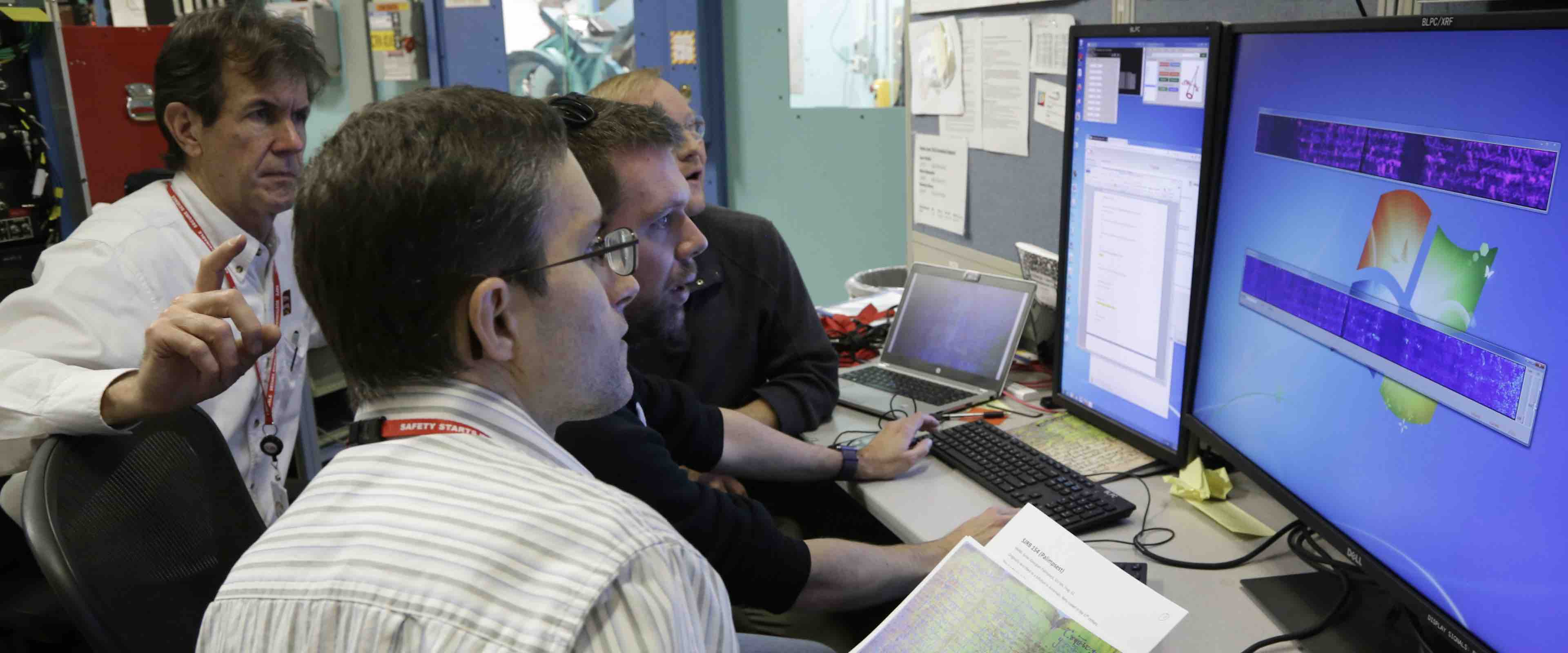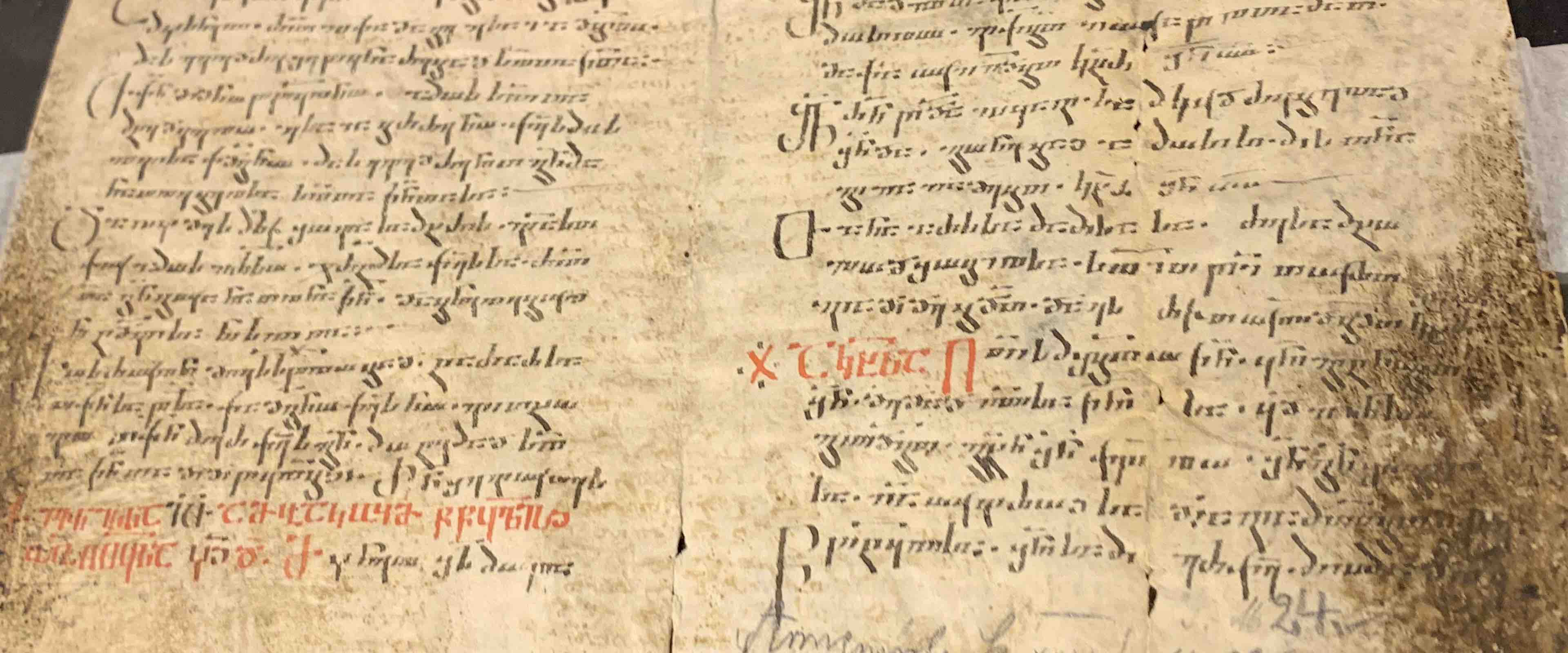Ancient Writing Revealed During HMML Palimpsest Imaging At Stanford's Slac Lab
Ancient Writing Revealed During HMML Palimpsest Imaging at Stanford's SLAC Lab
HMML’s very own palimpsest fragment recently underwent high energy x-ray imaging at Stanford’s SLAC National Accelerator Laboratory. A palimpsest is a parchment manuscript page that has been written on, erased, and reused – with the earlier writing invisibly embedded in the sheet. HMML’s single palimpsest leaf contains three layers of writing – a visible upper text written in medieval Georgian dating to the 10th century, and two hidden layers of Syriac writing dating to the 6th and 8th centuries (it is common that palimpsest layers of writing are separated by 150-200 years).

Earlier attempts to recover the Syriac underwriting using multispectral imaging revealed limited results, so the team sent the fragment on to Stanford’s SLAC lab for more powerful imaging using x-ray fluorescence (XRF) technology. HMML’s David Calabro and Wayne Torborg joined Mike Toth of R.B. Toth Associates and the staff at SLAC to conduct round-the-clock imaging for 3 days. Toth was involved in successfully imaging both the famed Archimedes and Galen Syriac palimpsests. Like HMML’s palimpsest, these also contain ancient 6th-century Syriac texts embedded within later medieval manuscripts. Reading this writing requires high tech advanced imaging and expertise of scholars who are familiar with early Syriac writing and textual traditions.

Initial results are promising. HMML’s Curator for Islamic and Eastern Christian Manuscripts, David Calabro, was able to read a few words of text from the oldest 6th-century layer and has likely ruled out that the underwriting is a biblical text. News of the SLAC project also brought forward information from colleagues who may have identified the manuscript that the lost fragment came from – a book that now lives at the ancient library of the Monastery of Saint Catherine’s in the desert foothills of Mt. Sinai, Egypt. In the coming months, Calabro will be collaborating with textual scholars, paleographers (who can read ancient handwriting), and scientific imaging experts to process the SLAC data and interpret the Syriac underwriting. The data and images produced by the project will be openly accessible to scholars and the public and will allow HMML to collaborate with colleagues in the field of digital humanities to develop and share standards for digital data management and access. Stay tuned for developments.




